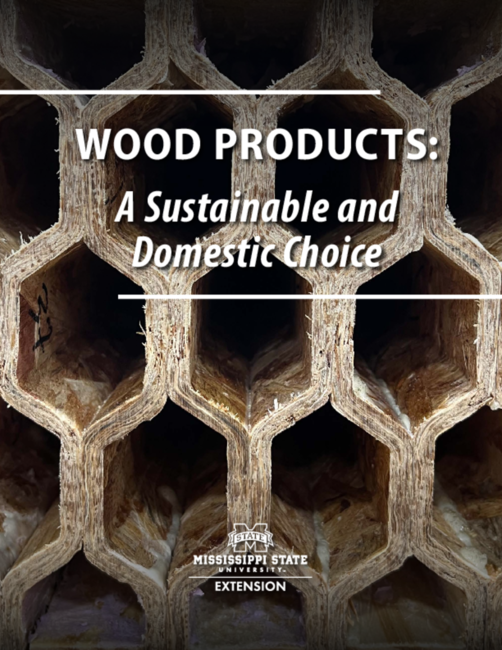M2483
Wood Products: A Sustainable and Domestic Choice
Download the complete publication by selecting the publication image in the right column.
This publication explores the connection between climate change, sustainable forest management, and the role of wood-based products in reducing greenhouse gas emissions. It introduces the greenhouse effect and explains how the use of renewable resources like wood can support environmental sustainability. The remaining lessons focus on the relationship between forests and humans, different types of wood-based products, and their preservation.
Lessons covered include:
- Lesson 1: Greenhouse Effect
- Lesson 2: Forest and Humans
- Lesson 3: Structural Wood-Based Products
- Lesson 4: Non-Structural Wood-Based Products
- Lesson 5: Preservation
You can also contact state Extension specialists or your local Extension office for answers to specific questions.
This work is supported by the intramural research program Biobased Economy Through Biobased Products, project award no. 2023-68016-40132, from the U.S. Department of Agriculture’s National Institute of Food and Agriculture. Any opinions, findings, conclusions, or recommendations expressed in this publication are those of the author(s) and should not be construed to represent any official USDA or U.S. Government determination or policy.
This research is a contribution of Mississippi State University’s Forest and Wildlife Research Center.
The information given here is for educational purposes only. References to commercial products, trade names, or suppliers are made with the understanding that no endorsement is implied and that no discrimination against other products or suppliers is intended.
M2483 (09-25)
By Mostafa Mohammadabadi, PhD, Assistant Professor, Kevin Ragon, PhD, Associate Professor, and Rubin Shmulsky, PhD, Professor and Head, Sustainable Bioproducts.
The Mississippi State University Extension Service is working to ensure all web content is accessible to all users. If you need assistance accessing any of our content, please email the webteam or call 662-325-2262.
Contacts
-
 Associate Professor
Associate Professor- Sustainable Bioproducts
-
 Professor and Head
Professor and Head- Sustainable Bioproducts
